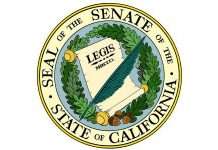In this episode of The Workplace podcast, CalChamber Executive Vice President and General Counsel Erika Frank, and employment law expert Jennifer Shaw discuss the difference between “restricted” and “unrestricted” on-call shifts, and what issues may arise with the Paycheck Protection Program if employers place workers on on-call shifts.
Restricted vs. Unrestricted
As more employees are allowed to work from home due to the COVID-19 pandemic and shelter-in-place county ordinances, employers may find that not all positions have enough work to complete full-time hours, Frank says. To balance company needs, some employees are being shifted to on-call status, working only if the company expects hours at a particular time.
Wage and hour issues may arise, however, if an employer doesn’t understand the difference between “restricted” and “unrestricted” on-call shifts.
Shaw explains that a restricted on-call shift is when an employer sets restrictions on when an employee should report to work. For example, if an employer requires that an employee work within 30 minutes of being asked to do so, or if an employer requires that an employee not drink alcoholic beverages the day before they are called to work, the shift is deemed as restrictive on call.
“The more we are limiting the employee’s ability to pursue their personal pursuits, which is the phrase that is used under the law, the more likely the time will be considered restricted and therefore must be paid at the applicable minimum wage rate,” Shaw says.
If an employer, however, does not restrict an employee’s time, the employer is required to pay only for actual hours worked. For example, Shaw says, if a manager tells an employee that hours may be available on Thursday and it’s fine if they don’t answer the call to work, then the on-call shift is unrestricted and the company does not need to compensate the employee for the time.
Another situation that creates wage and hour issues is if an employer requires workers to call at a certain time to check to see if there will be hours available, Shaw explains. For example, if an employer requires a worker to call at 8 a.m. to check if they must report to work at 11 a.m. and the worker is asked to report to work, the employer must compensate for the gap hours between 8 a.m. and 11 a.m., in essence paying an employee to wait.
“It’s a ‘sort of’ shift,” Shaw says, because the shift technically began at 8 a.m.
Given that most people are staying home due to the COVID-19 pandemic, Frank asks Shaw if on-call rules are affected if an employee who works remotely cannot leave their home due to shelter-in-place ordinances.
Shaw replies that in this scenario, employers are not the reason an employee’s actions and movements are restricted. It does not apply to employers, she says.
Paycheck Protection Program
The Paycheck Protection Program (PPP) reimburses businesses for payroll expenses during the COVID-19 pandemic crisis, and incentivizes businesses to keep employees on the payroll, even if the business has to close up shop due to shelter-in-place ordinances.
This may mean paying people to do nothing, Shaw says.
Putting employees on on-call shifts can complicate matters for companies that seek payroll reimbursement through the PPP.
Some employers may think that simply putting people on on-call shifts will meet PPP requirements to “maintain payroll,” but the PPP will look at if an employer is actually paying the payroll, Shaw explains.
Shaw points out that there are many payroll questions that still need to be addressed under the PPP, such as what if someone quits or what if an employer has to fire someone due to performance issues? Much of the rules under the PPP are still fluid, and there has not been much guidance on these issues.
And because rules are still so fluid and open to interpretation, Frank cautions employers to be careful of the information they are listening to and following. It’s important to follow credible sources, she emphasizes.
Resources Available
The California state government maintains a COVID-19 resource page at https://covid19.ca.gov/.
The California Chamber of Commerce also provides an up-to-date COVID-19 resource page that lists relevant information for California employers, including links to county websites, at www.calchamber.com/coronavirus.


